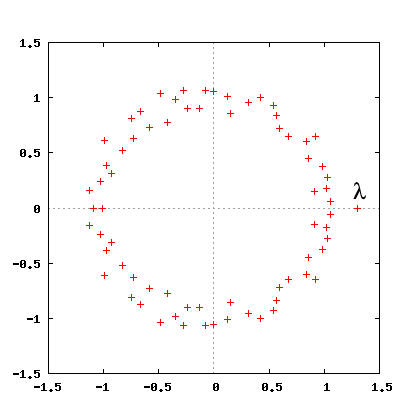Look-and-say sequence: Difference between revisions
→Basic properties: Polynomials are not equations |
|||
| Line 16: | Line 16: | ||
* The sequence grows indefinitely. In fact, any variant defined by starting with a different seed number will (eventually) also grow indefinitely, except for the [[degeneracy (mathematics)|degenerate]] sequence 22, 22, 22, 22 ... . |
* The sequence grows indefinitely. In fact, any variant defined by starting with a different seed number will (eventually) also grow indefinitely, except for the [[degeneracy (mathematics)|degenerate]] sequence 22, 22, 22, 22 ... . |
||
* No digits other than 1, 2, and 3 ever appear in the sequence, unless the seed number contains such a digit or a run of more than three of the same digit. |
* No digits other than 1, 2, and 3 ever appear in the sequence, unless the seed number contains such a digit or a run of more than three of the same digit. |
||
* Conway's '''cosmological theorem''': Every sequence eventually splits into a sequence of "atomic elements", which are finite subsequences that never again interact with their neighbors. There are 92 elements containing the digits 1,2,3 only, which |
* [[John Horton Conway|Conway's]] '''cosmological theorem''': Every sequence eventually splits into a sequence of "atomic elements", which are finite subsequences that never again interact with their neighbors. There are 92 elements containing the digits 1,2,3 only, which John Conway named after the natural [[chemical element]]s. There are also two "transuranic" elements for each digit larger than 3. |
||
* The terms eventually grow in length by about 30% per generation. In fact, if <math>L_n</math> denotes the number of digits of the <math>n</math>-th member of the sequence, then |
* The terms eventually grow in length by about 30% per generation. In fact, if <math>L_n</math> denotes the number of digits of the <math>n</math>-th member of the sequence, then |
||
:: <math>\lim_{n \to \infty}\frac{L_{n+1}}{L_{n}} = \lambda</math> |
:: <math>\lim_{n \to \infty}\frac{L_{n+1}}{L_{n}} = \lambda</math> |
||
Revision as of 08:24, 7 August 2009
In mathematics, the look-and-say sequence is the sequence of integers beginning as follows:
To generate a member of the sequence from the previous member, read off the digits of the previous member, counting the number of digits in groups of the same digit. For example:
- 1 is read off as "one 1" or 11.
- 11 is read off as "two 1's" or 21.
- 21 is read off as "one 2, then one 1" or 1211.
- 1211 is read off as "one 1, then one 2, then two 1's" or 111221.
- 111221 is read off as "three 1, then two 2, then one 1" or 312211.
The idea is similar to that of run-length encoding.
Basic properties
- The sequence grows indefinitely. In fact, any variant defined by starting with a different seed number will (eventually) also grow indefinitely, except for the degenerate sequence 22, 22, 22, 22 ... .
- No digits other than 1, 2, and 3 ever appear in the sequence, unless the seed number contains such a digit or a run of more than three of the same digit.
- Conway's cosmological theorem: Every sequence eventually splits into a sequence of "atomic elements", which are finite subsequences that never again interact with their neighbors. There are 92 elements containing the digits 1,2,3 only, which John Conway named after the natural chemical elements. There are also two "transuranic" elements for each digit larger than 3.
- The terms eventually grow in length by about 30% per generation. In fact, if denotes the number of digits of the -th member of the sequence, then
- where is an algebraic number of degree 71 known as Conway's constant. This fact was proven by Conway. This also holds for variants of the sequence starting with any integer other than 22.
Conway's constant is the unique positive real root of the following polynomial:

Origin
It was introduced and analyzed by John Conway in his paper "The Weird and Wonderful Chemistry of Audioactive Decay" published in Eureka 46, 5-18 in 1986.
This sequence is also referred to as containing Langford numbers.[citation needed]
Popularization
It is also popularly known as the Morris Number Sequence, after cryptographer Robert Morris, and the puzzle is sometimes referred to as the Cuckoo's Egg from a description of Morris in Clifford Stoll's book The Cuckoo's Egg. [1] [2]
External links
- Weisstein, Eric W. "Look and Say Sequence". MathWorld.
- Look and Say sequence generator
- OEIS: A014715 Beginning digits of Conway's constant at the On-Line Encyclopedia of Integer Sequences










